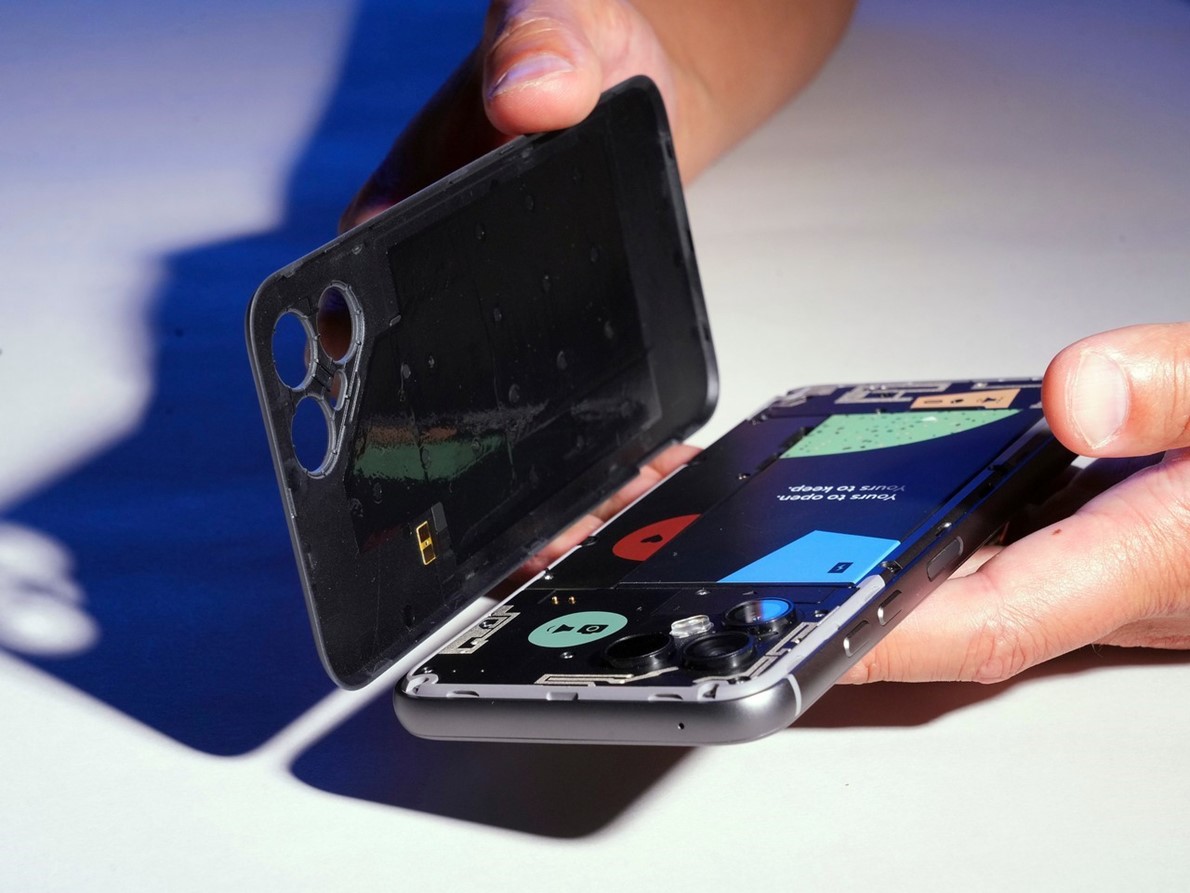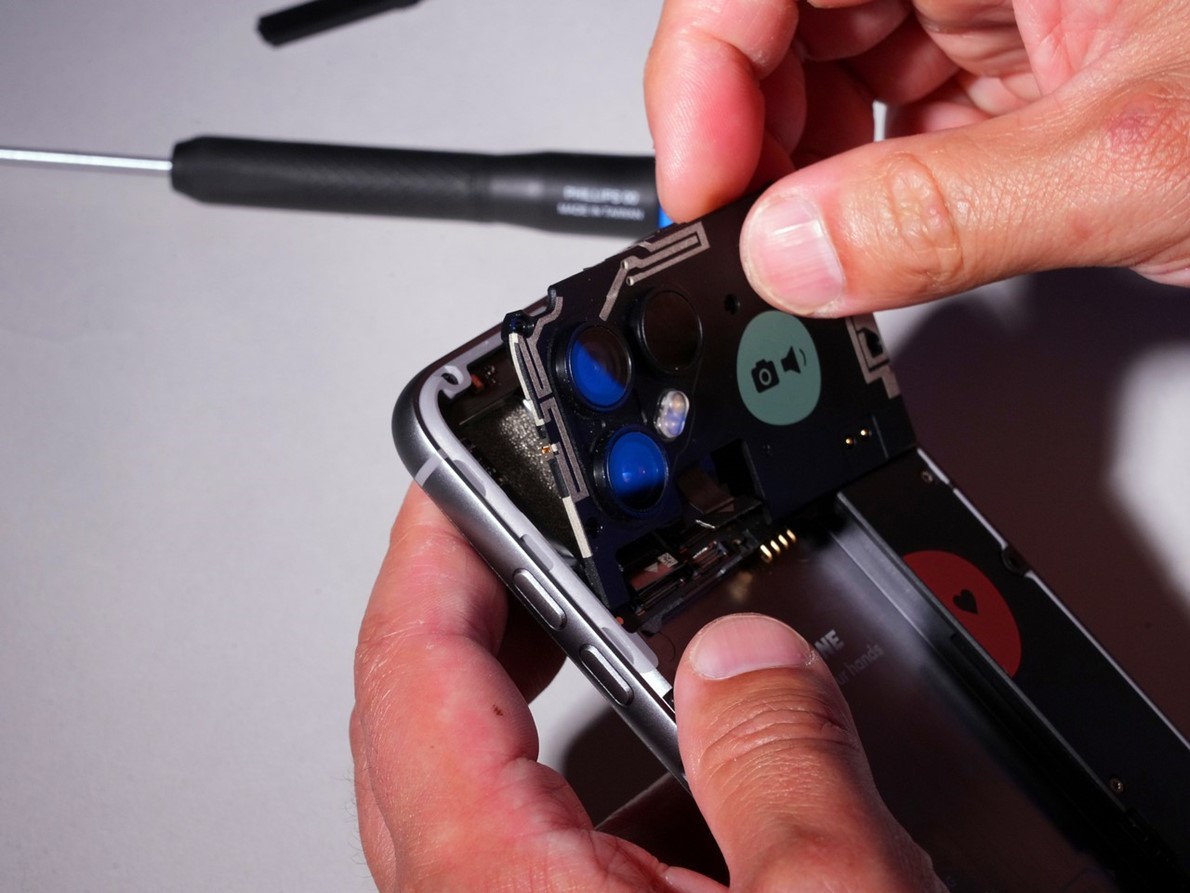What would a smartphone look like if it could last
for 10 years?
It is a question
that most of us have not had the luxury of pondering. That is because many
smartphones are designed to be replaced every two or three years. And Apple,
Samsung and other handset makers unveil new models — along with big marketing
campaigns — each year, encouraging us to upgrade.
اضافة اعلان
But bear with us
and fantasize for a moment.
If a smartphone
were designed to last a decade, it would probably be made so that we could simply
open it up to replace a part like a depleted battery or a cracked screen. Many
of its components would be able to be upgraded — if you wanted a better camera,
you could just swap out the old one for a newer, more powerful one. You could
also download software updates from the phone’s maker indefinitely.
Sensible and
sustainable, right?
Thinking of what
such a device might be like is especially relevant now as phone season — that
time of year when tech companies blitz us with new models — begins again. On
Wednesday, Apple unveiled the
iPhone 14, which bears a striking resemblance to
its predecessor. Also this week, Google announced plans to show new Android
phones in October. And last month, Samsung introduced an array of cellphones
that fold like books.

These latest wares
underscore how today’s smartphones aren’t made for longevity. Most of the
gadgets come tightly sealed up with glue to keep you out of them. Parts, like
cameras and screens, are impossible to upgrade a la carte.
Software updates are
guaranteed for only a finite amount of time, usually two years for Androids and
about five years for iPhones.
Keeping us on such
short cycles of smartphone ownership is great for the tech companies and their
coffers — but maybe not so much for us and our wallets.
Don Norman, a
former vice president for advanced technology at Apple and the author of nearly
two dozen books on design, said smartphone makers were guilty of treating
consumer technology as if it were fashion wear, releasing products each year
that become harder to repair and adding features that hasten obsolescence.
“You want to make
the computer out of one piece of metal, and you want it to be as thin as
possible,” Norman said. “So, you had to make the battery with no case so it
gets really hard to get to. You use glue instead of screws.”
Yet the idea of a
longer-lasting phone needn’t be a fantasy. One already exists: the $580
Fairphone 4 made by a startup,
Fairphone, in Amsterdam. The Fairphone 4, which
is sold only in Europe, has a plastic cover that can be easily removed to
expose its innards. Its components can be swapped out in minutes by removing a
few ordinary screws.
The idea behind the
Fairphone is that if you want a phone with new technology, you can get it
without having to replace your current device entirely — and if something goes
wrong with the phone, like you drop it, it can be easily fixed. That makes the
Fairphone the antithesis of most smartphones today and shows how tech companies
can design the gadgets differently, for durability, and sustainability.
How it could be with the hardware
Take your iPhone or Android phone and look at it closely. Notice how it is
shut tight with unique screws that require special screwdrivers. Apple even
invented its own screw.

But the Fairphone
comes with a small screwdriver that invites you to open up the phone. So, when
I began testing it, that was the first thing I did.
Taking the
Fairphone apart turned out to be a breeze. Removing its plastic cover revealed
its camera, battery, speakers and other components. They were held in place
with ordinary screws that could be quickly taken out with the screwdriver. In
less than five minutes, I removed all of those parts. In about the same amount
of time, I reassembled the phone.
The experience of
taking the phone apart was empowering. I had the confidence that if I had to do
a repair or some basic maintenance, like swapping in a new camera or battery, I
could do so in minutes and for cheap. (Fairphone charges $30 for a new battery
and $80 for a new camera.)
Disassembling my
iPhone, on the other hand, was a nightmare.
When I took the
Apple device apart during a previous test, it involved removing the proprietary
screws with a special screwdriver and melting the glue that held the case
together. To remove the battery, I had to use tweezers to yank on the tiny
strips of glue underneath it. Even though I eventually succeeded in replacing
the battery, I broke the iPhone’s screen in the process — and a replacement
display cost about $300.
The Fairphone’s
plastic cover is not pretty, and it would probably pop off if the phone fell on
a hard surface. But even less fun would be dropping an Apple or Samsung phone
with a glass back, shattering it and shelling out hundreds of dollars to get it
repaired (or to get it replaced).
What it was like to use
Using the Fairphone was rather unremarkable. It runs vanilla Android
software, which means it can load Google’s apps and software downloaded through
the Play store.
But Eva Gouwens,
Fairphone’s chief executive, said the company was committed to providing
software updates to its phones for as long as possible. These updates are
crucial for protecting your hardware from the latest cyberattacks and malware;
they also ensure that your phone can run the latest apps.
A Fairphone model
that came out six years ago is still getting Android updates. Most Android
phones stop getting updates after two years.
The Fairphone 4’s
computing processor and camera left much to be desired, however. In speed tests
run with the app Geekbench, the Fairphone 4 was about 35 percent slower than
Google’s $600 Pixel 6 at doing things like checking email and taking photos.
Pictures produced by the Fairphone 4 were grainier and less attractive than
shots taken with iPhones and other mainstream Android phones.
Still, I would not
expect Fairphone’s small team — about 110 people — to crank out computing and
camera technology on a par with the big tech companies.
Fairphone said it
was making money, generating a few million euros in profit in 2020 and 2021.
Beyond selling phones and easy-to-install parts, the company is experimenting
with selling services like helping people fix their devices or maintain their
smartphone software, Gouwens said. That’s a slow and steady revenue stream as
opposed to the more rapid model of selling new phones every year.

“If you design a
phone that lasts, and your users actually keep your device and use it longer,
then you become more profitable,” she said.
How we think about
our personal tech
This article is not about recommending that people buy a Fairphone 4.
The broader point
is that tech companies with incredible wealth could do a better job of making
their phones easier to repair and friendlier to the environment and our
wallets. And we, as consumers, could do better by changing how we think about
personal technology, Norman said.
“Consumers do have
considerable power but only if people band together,” he said.
One important step
is to maintain our devices as we do our cars — consider, for instance, taking a
broken device to a repair shop before resorting to replacing it. Another action
is to reject the marketing hype over every incremental feature introduced with
every new phone.
Because if we’re already happy with our smartphones, we will
probably continue to be — so long as they work. And now we know that some
models can work for a very long time.
Read more Technology
Jordan News



